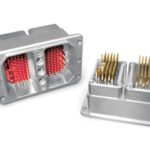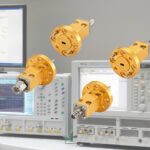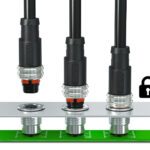Spring Probe Connector Selection Tips
A how-to guide for evaluating and specifying spring probe connectors
Gina Prieto, Key Account Director, Smiths Interconnect
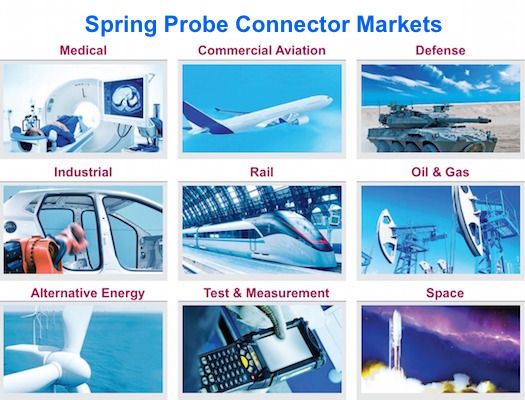 Connectors that utilize spring probe contact technology offer a number of advantages over those that incorporate other types of contacts, including: enhanced compliance, blind mating, space savings, impressive cycle life (up to 300,000 cycles), and high misalignment tolerances. However, what truly sets spring probe contacts apart is their design flexibility, which makes them suitable for a vast range of applications. Still, with so many signal and power probe contact options available on today’s market, choosing the right one can be a daunting task. Although it’s always best to engage with a connector supplier’s experienced applications engineers to ensure the selection of an optimum application-specific solution, the following explanations and recommendations can help make the most of that conversation.
Connectors that utilize spring probe contact technology offer a number of advantages over those that incorporate other types of contacts, including: enhanced compliance, blind mating, space savings, impressive cycle life (up to 300,000 cycles), and high misalignment tolerances. However, what truly sets spring probe contacts apart is their design flexibility, which makes them suitable for a vast range of applications. Still, with so many signal and power probe contact options available on today’s market, choosing the right one can be a daunting task. Although it’s always best to engage with a connector supplier’s experienced applications engineers to ensure the selection of an optimum application-specific solution, the following explanations and recommendations can help make the most of that conversation.
The design process for spring probe connectors, like all others, begins with the basics: identifying the physical arrangement of the contacts and the size and type of connector housing. The envelope allocated to the connector, the distance between boards, and the required number of signal and power contacts will automatically determine minimum contact spacing and maximum contact length. While probes can be very low profile — down to 1.75mm compressed — and very dense, with 1mm spacing, choosing larger options whenever available will result in a more robust and higher performing connector.
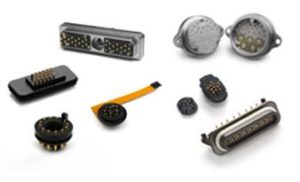
Figure 1: Custom spring probe connectors
Spring probes aren’t limited to straight-on, face-to-face mating. They are also available with both bayonet and toe-in engagements, which makes them especially useful in applications where space is at a premium. The wiping action associated with these mating configurations also acts as a means of self-cleaning, as it effectively removes contaminants and assists in the maintenance of a stable contact resistance. Probes can mate to plated pads on a printed circuit board (PCB), target pins, or contact pads on the exterior of a device, but the type of engagement specified will vary depending on the choice of mating surface.
Spring probes also offer termination flexibility with through-hole, surface mount, and solder bucket options, and, in addition to PCBs, can be terminated to cables or flex circuits. However, the greatest space savings is achieved with compression mounting, which creates a one-piece solderless connector solution.
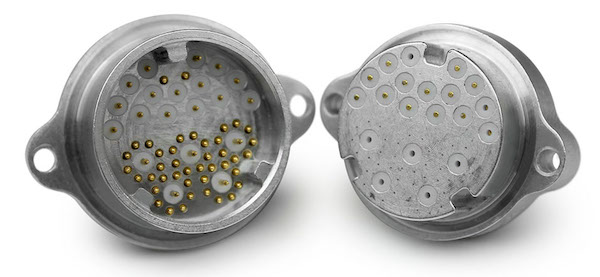
Figure 2: IDI spring probe technology from Smiths Interconnect can accommodate mixed signals and functionality in a single, custom connector design.
In addition to their low profile and high mating and termination flexibility, spring probe contacts offer: high cycle life, blind-mating connection compatibility, a high compliance ratio, and robust resistance to mechanical shock and vibration. Combined, these benefits make spring contact technology well suited for use in alternative energy, commercial aviation, defense, EV, HEV, industrial, medical, space, and test and measurement applications.
As such, it’s critical to define any application-specific demands on the contact and connector during the design process. It’s important to know how long the connector will be in use, how many mating cycles are required, and whether it will be subjected to harsh operating conditions. Spring probes represent an excellent option for use in harsh environments exposed to high shock and vibration, extreme temperatures, and corrosive materials, but each of these elements will have an impact on optimal probe choice, and the more severe an operating environment is, the more it will affect the choice of contact. More robust solutions often employ larger contacts than those designed for use in benign environments. In applications where water ingress is a concern, spring probe connectors can be designed to achieve IP68 sealing in both mated and unmated conditions.
When selecting spring probe connectors, it’s also critical to define signal performance requirements. Criteria including the amount of current and voltage that will be required of the connector and whether high data rates will be transmitted via differential pair will affect the final design of the connector and choice of probe contacts, as will the maximum tolerable voltage drop across the connector, which determines how stable the contact resistance of the probes must be. The signal integrity of high-speed digital or high-frequency analog channels can be managed by controlling the characteristic impedance.
Spring probes offer extreme design versatility, can provide unique physical and performance advantages that other contact technologies can’t readily achieve, and are well suited for use in a wide range of applications. All it takes to ensure a trouble-free design process and identify an optimum solution that delivers maximum performance is a list of application-specific requirements and the help of a trusted connector supplier.

